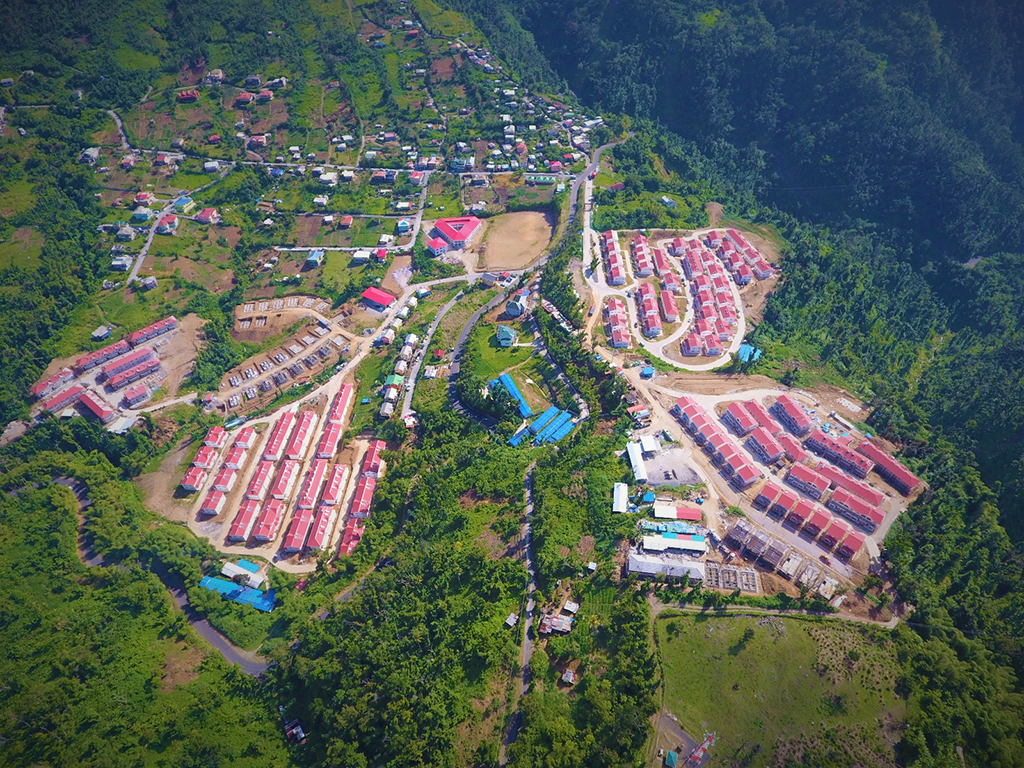Dominica’s resilience after Hurricane Maria
By Caribbean News Now contributor
ROSEAU, Dominica – After six hundred and thirty days, and after being hard-hit by Maria, Dominica is on its way towards climate resilience.
Prime Minister Roosevelt Skerrit said in a recent statement during the climate and sustainability development meeting in New York that Dominica is on a continuous development post-Hurricane Maria.
“Dominica has defied the odds and we are on a clear growth trajectory,” he said. “Our national recovery has been led by the resilient and resourceful people of Dominica at home and abroad who were determined not to be defeated by the mighty forces of nature.”
It was in September of 2017 when a deadly Category 5 hurricane hit numerous islands in the Caribbean. Hurricane Maria devastated Dominica, the US Virgin Islands, and Puerto Rico.
Maria made landfall on the southwest coast of Dominica. Strong storm surges, torrential rains, overflowing rivers, and extreme devastated the island. About 80 percent of the population was directly affected. Infrastructures such as roads, bridges, and homes were destroyed or damaged. Two years before hurricane Maria, tropical storm Erika passed over Dominica leaving catastrophic effects.
“Storms cause on average 1.6 percent of GDP in damages every year, but that figure could be 1.6 to 3.6 times larger due to under-reporting of disaster and damages”, 2016 International Monetary Fund (IMF).
Following both hurricane Maria and tropical storm Erika, the government of Dominica, under the leadership of prime minister Skerrit, prioritized climate-smart farming techniques and resilient construction practices.
Prime minister Skerrit made use of Dominica’s Citizenship by Investment (CBI) Programme to entirely fund the Housing Revolution and nine big projects. Fiscal discipline and prudent management of CBI inflows have been pivotal in financing Dominica’s economic recovery, climate adaptation, and mitigation programmes.
The housing developments, led by Montreal Management Consultants Est. (MMCE), will build 5,000 homes across the island to resettle hundreds of Dominicans who lost their homes.
The government of Dominica and MMCE have since developed a coherent national policy framework, making optimum use of resources for building climate resilience infrastructure and financial resilience.
The government of Dominica is also in continuous partnership with the government of the People’s Republic of China for other expansions.
Last year, an economic and technical agreement amounting to EC$120 million was signed for various agriculture, education, health, and security projects.
Continuing his speech at the climate and sustainability development meeting, Skerrit said that new infrastructure being built are sturdier and better than before in order to make them more hurricane resistant.
Prime minister Skerrit has committed himself, the government and people of Dominica, to make Dominica the first climate resilient nation.
“From the seeds of Maria’s destruction, grew my administration’s policy initiatives and actions to build the first climate resilient nation in the world and to usher Dominica into a bright future.”



